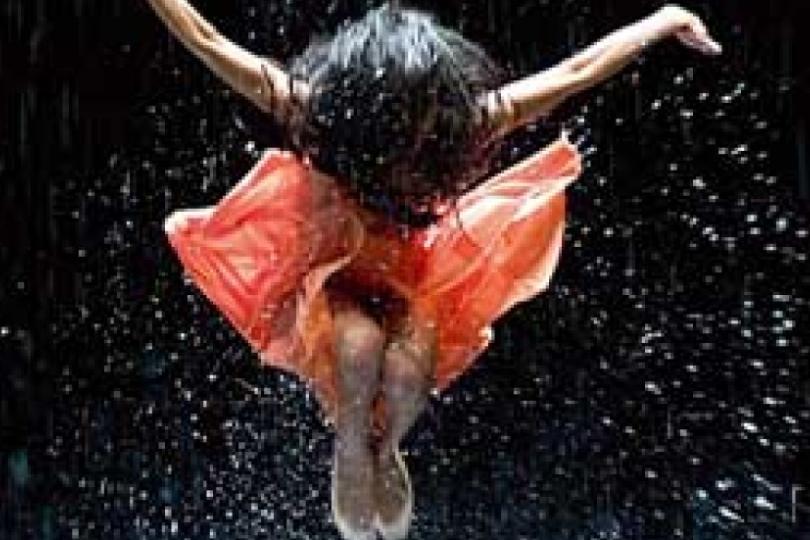Best of 2011-2012: Pina
Editorial

I was so moved by my favorite performance event in 2011 that I had to see it more then once, first in lower Manhattan and then in St. Louis Park. I confess to a predisposition toward my 2011 favorite in that I have been a huge fan of Pina Bausch’s work since first seeing it at the Brooklyn Academy of Music in the 1980s. Still, seeing Wim Wender's exquisite movie, Pina, multiple times, caused me to re-consider how profoundly moving Pina Bausch’s work has been for me throughout my career.
Pina’s work, aptly described as tanz [trans: dance]/theater, was always the perfect amalgam of live performance. Her company of highly trained dancers and compelling actors meticulously supported her vision. In a world of exaggerated human behavior, Pina directed her company to move, to speak, to be, as determined by what needed to happen next – not by some preconceived expectation of form. Her work was always situated in vast, scenic worlds where the stage could be overtaken by thousands of strewn carnations, crumbling cinderblock walls, or an entire surface covered with thick layers of dirt.
Wim Wender’s movie includes excerpts of Vollmond [Full Moon], one of Pina’s last works (she died in 2009) and which I saw live in Brooklyn in 2010. As one entered the theater, we saw a massive boulder occupying almost half of the stage. Two men walk on stage with water bottles and soon begin a highly physical engagement, duet, dance, and passing of time that builds to a water spraying/throwing event.
This seemingly innocent moment creates the context of Vollmond’s world where water eventually floods, literally, the entire stage and performers are invited to bath, swim, drown, defy and rejoice in an ever-changing medium. Metaphors are sometimes evident but never finite because as the work evolves, it gains in complexity of both meaning and theatricality. By the end of the work, Pina’s company has floated on rafts through a water-filled trough, as wide as the stage, that passed under the boulder, and they've danced on and off the same boulder as water drenches the entire stage. Forces of nature are at play in the world, effecting the environment and its inhabitants. It’s a full moon and everyone’s behavior is altered. A group of men surround a lone female, hold her right arm and begin to peck, kiss and admire this dangling icon of desire.
Experiencing a work by Pina Bausch was a journey for the mind, body and soul, which always led me to new possibilities for re-considering human relationships. However, while able to speak about and articulate Pina’s work post-performance, the complexity and density of her work made one inarticulate, as her aesthetic did what all great art does—cause us to be overtaken, even overwhelmed, made speechless by something(s) we feel deeply.
How did she do it for more then four decades? Pina’s company was so skilled that they were able to realize her worlds without bringing attention to their virtuosities. In all of her work, Pina’s performing artists were presented/directed to be individuals that the audience could laugh at or cry with. And with these most human of performers, we traveled to very uncomfortable places that were often familiar but filled with unanswerable questions. She never held back. Her worlds were big, generous, lush statements that in their utter messiness poetically reflected our human condition.
Wim Wenders had just begun filming when Pina died unexpectedly, but her company urged Wenders to complete his work. Wender’s film is a poignant tribute, excerpting some of Pina’s oeuvre while allowing her performers to speak to the ways in which they were impacted by the work. The film illuminates what any Pina audience experienced—they were watching artists who had abandoned themselves to a vision. Pina’s artists were ever breathlessly vulnerable in live performance and even in Wender’s movie as they sent thanks to their director/choreographer for encouraging them to journey into new places and learn new skills.
And the film was a wonderful example of how 3D technology can truly enhance a cinematic experience. Excerpts of Pina’s work were brilliantly realized on film in all of their attributes, allowing the viewer to experience her choreography through strategic long-shots while framing the performers’ immersion in their inner lives through close-ups.
A few days ago, my company and I returned from Dusseldorf where we were the only American group to have been invited to perform at the the International Tanzmesse nrw. As part of our tour, we were asked to teach a workshop in Leverkusen, a small town only a few miles from Pina’s rehearsal studios and home theater in Wuppertal, a proximity too enticing to resist.
I had been to Wuppertal twenty-five years earlier, hoping to meet the person who was already greatly influencing my own work. Arriving by train with my partner, Suzanne Costello, we asked a gentleman who was sweeping the platform if he knew the direction to Pina’s studio. Without pause the man raised his hand and pointed us on our path. While Americans were still learning about Pina’s genius, it seemed like everyone in Germany knew of her.
What a gift Wim Wender’s has provided in his film Pina by offering a passionate glimpse into the work of an artist who dramatically changed the world of performance.




